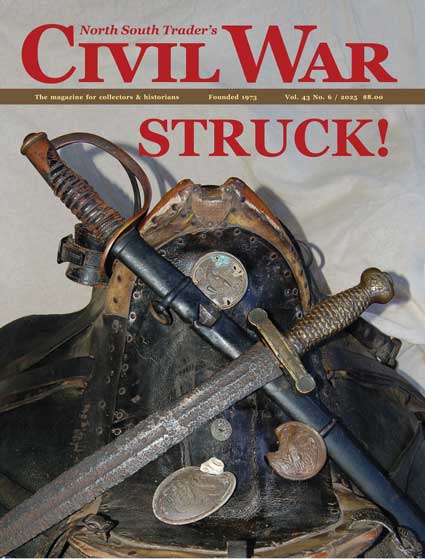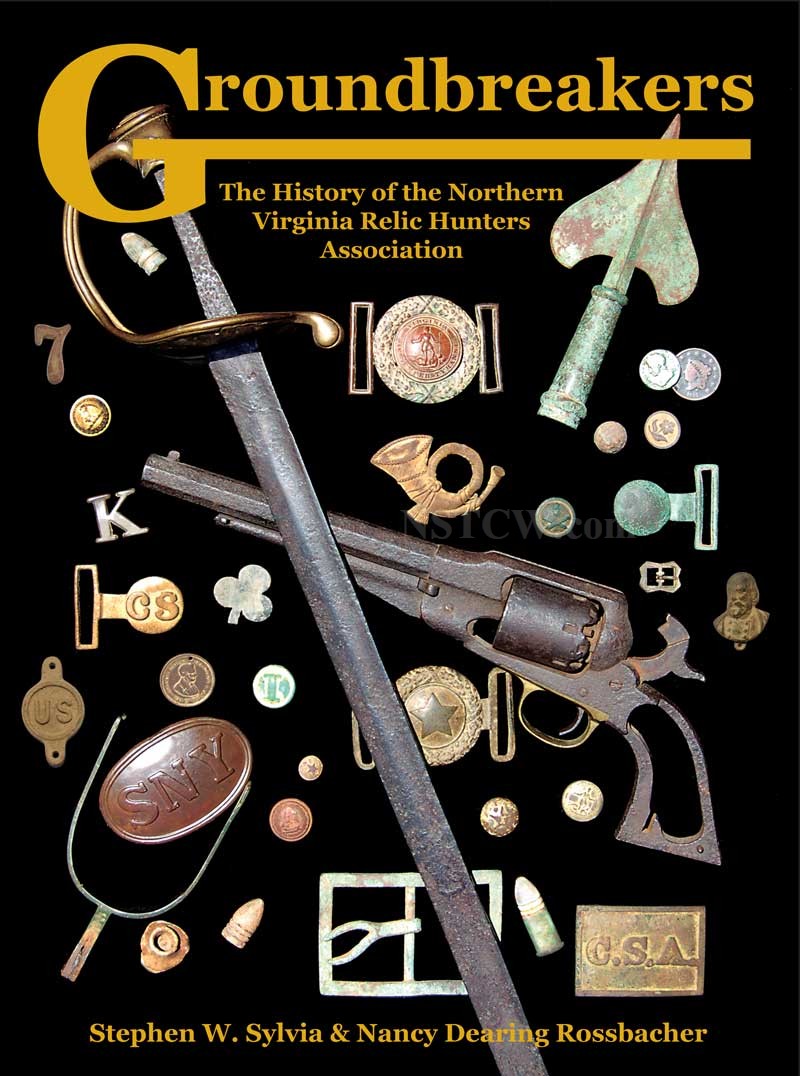|
Publisher's Forum Issue: 36-6 |
|
Ask them about what's in the back of their closet I can�t tell you how many collectors have proudly announced to me over the years that they still have the first Civil War artifact they ever owned. There is always a proud, almost smug, satisfaction expressed along with the statement. Interestingly, the relic is usually something small and comparatively insignificant, such as a bullet, an infantry horn insignia, or an eagle button. These same collectors will usually proclaim they have their first Civil War book, whether it�s Frank Lord�s Civil War Encyclopedia, Shelby Foote�s Shiloh, or Classic Comics� rendition of The Red Badge of Courage. They may not have looked at the relic, reread the books, or flipped through the comic in decades, but they invariably know where they are and speak of them with a wistful fondness. I used to chalk this bit of quirkiness up to the odd wiring of the collector�s psyche. After all, we aren�t exactly normal when it comes to our hobby. Or are we? I was chatting with the editor not long ago about this subject, and she remarked that she�d just read something I�d find interesting. She e-mailed the link to an Internet article about adult connections to objects from our childhood. It seems that even among noncollecting adults, many retain an inexplicable attachment to objects from their youth. I�m not talking only about ratty teddy bears or security blankets, but other items from childhood to early teen years that people hang onto all their lives. It could be an article of clothing, a grade school award trophy, a piece of jewelry, or a book. It may be stored in an old trunk or cedar chest, almost forgotten for many years, but it is still kept as some sort of talisman or keepsake. Just knowing it still exists offers some sort of distant comfort, a connection to the past. Think of the sled known as Rosebud in the classic Orson Welles film "Citizen Kane." This attachment to an inanimate object is called "essentialism," a word coined by those who have studied this phenomenon. It seems that most people attribute to one or more objects a deeper emotional attachment than merely a nostalgic connection. Some people attribute abilities, such as bestowing good luck, on inanimate objects. There are a few Civil War dealers and attendees, for example, who wear the same lucky show cap or sports jersey to every show. I have known relic hunters who don a lucky jacket, cap, or digging knife when heading out for the hunt. It may be worn out and held together with duct tape. It may even be unwashed, lest the luck be drained away with the dirt, but they don�t go out without it. At the extreme opposite end of that phenomenon is a condition that plagues people who cannot even bear to be around antiques, let alone have them in their home. The notion of old stuff once used by now-dead people creeps them out. I don�t suffer from such a phobia. As far as I�m concerned, old is good; new is probably made in China, and not so good. One of the studies quoted in the article was conducted over 30 years ago and concluded that kids who were allowed to take their favorite comfort object with them to the doctor�s office suffered less distress, as measured by heart rate and blood pressure, than those who were compelled to face the music without their blanket, teddy bear, or Davy Crockett coonskin cap. It�s not much of a leap to recognize that for many adults the notion of a good luck charm is an extension of that childhood association with a blankie or a stuffed animal providing some comfort and security. Another recent study found that some adults experienced a noticeable degree of distress simply cutting up photographs of revered items. I can�t imagine their distress at seeing the actual items destroyed. I�ve known people who would not switch a possession for an exact duplicate even though the duplicate was newer and more valuable. Most of us feel that way about our wedding rings, for example. A new replacement is just not the same as the one that was there with us on the day we made our vows. How many times have we heard and said, "If that relic could only talk, think of the tales it could tell." It seems we never completely lose that notion that inanimate objects possess some degree of life and power. I recently spoke with a gentleman who makes miniature cannon. He described showing one of his cannon to a potential customer and detailed how the fellow fawned over the gun, ran his hands softly along the tube, and even reverentially lowered his voice as he complimented the craftsmanship in the gun. He said the guy seemed normal otherwise, but he bonded to the cannon as though they had a personal relationship. I told him I see that at every show I attend. It�s not rocket science, even though some people are paid well to study such phenomena. One study referred to in the article announced that people who handle items for an extended time before an auction are more likely to bid more for the item than those who held the item for less time or not at all. The logic is obvious, but what is it that goes on in the brain when a person is physically handling a benign foreign object? That I cannot say, but I have often pointed out the tactile lure of relic hunting by explaining that people will grasp the attraction of the hobby immediately upon digging the first minié ball and rolling it between their fingers. A connection, immediate and often permanent, is made. Could it be that most people are collectors at heart? Perhaps those who don�t collect are simply people who have yet to find something that compels them to collect. It certainly seems to me that the same yearning that inspires collectors is a close cousin to the compulsion to hang onto cherished childhood objects, touchstones that serve no purpose but to make us feel good. When next confronted by someone who cannot grasp the impulse to collect, you might ask if they have anything from their youth tucked away in the attic or in the back of a closet or drawer�perhaps a scuffed baseball, a high school pennant, a ticket stub from a rock concert, or a valentine they got in first grade. Should anyone ask me, I can proudly show them my first minié ball, my tattered copies of Classic Comics� Red Badge of Courage and Shelby Foote�s Shiloh, and a ratty teddy bear missing one eye. �Pub. Stephen William Sylvia publishes NSTCW. publisher@nstcivilwar.com. |
| Past Publisher's Forums click an issue number to view |
| 43-6 |
| 43-5 |
| 43-4 |
| 43-3 |
| 43-2 |
| 42-3 |
| 42-3 |
| 42-3 |
| 42-3 |
| 42-3 |
| 41-6 |
| 41-5 |
| 41-1 |
| 40-5 |
| 40-4 |
| 40-3 |
| 40-1 |
| 39-6 |
| 39-5 |
| 39-4 |
| 39-3 |
| 39-2 |
| 39-1 |
| 38-3 |
| 38-2 |
| 38-1 |
| 37-6 |
| 37-5 |
| 37-4 |
| 37-3 |
| 37-2 |
| 37-1 |
| 36-9 |
| 36-5 |
| 36-4 |
| 36-3 |
| 36-2 |
| 36-1 |
| 35-6 |
| 35-5 |
| 35-4 |
| 35-3 |
| 35-2 |
| 35-1 |

